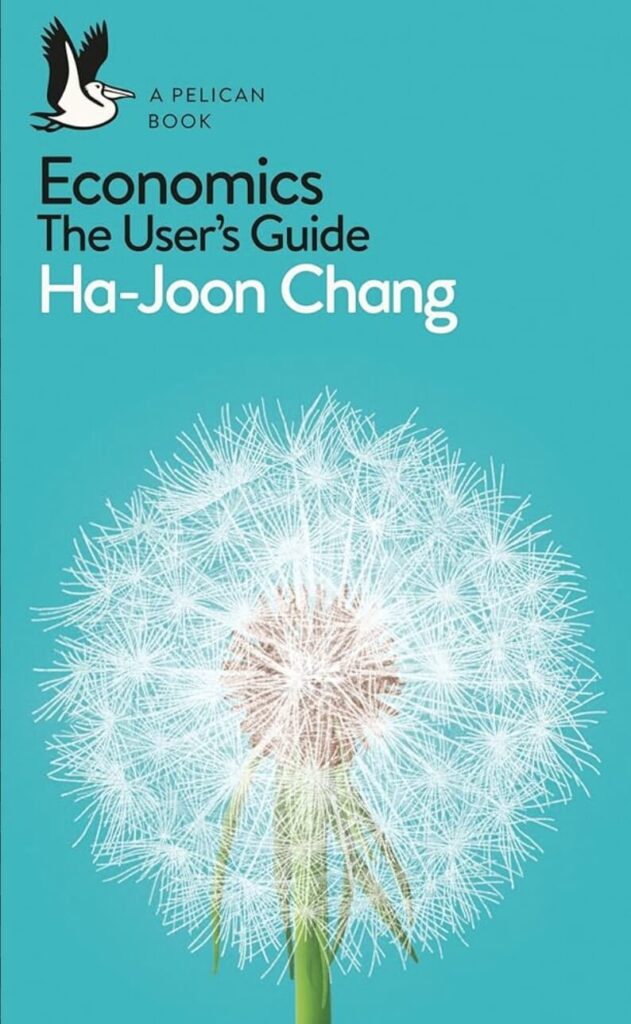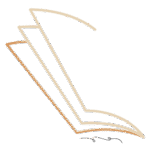If you’ve ever opened an economics book and felt like you were reading a foreign language, you’re not alone. With graphs, equations, and abstract theories, most economics texts seem more interested in impressing than informing. That’s what makes Economics: The User’s Guide by Ha-Joon Chang such a breath of fresh air.
In this approachable, witty, and quietly radical book, Chang does something rare: he makes economics understandable — and fun — for ordinary readers. But more importantly, he shows that economics isn’t a neutral science with one right answer. It’s a set of competing ideas about how the world works — and you have the right to engage with those ideas.
Whether you’re a student, activist, policymaker, or just a curious citizen, this book is your entry pass into the often opaque world of economics.
💡 Why This Book Is Different
Most economics textbooks are technical manuals for would-be economists. Economics: The User’s Guide, by contrast, is exactly what it says on the cover: a user’s guide — a practical, readable overview of what economics is, where it came from, and how different schools of thought try to explain the world.
Ha-Joon Chang’s goal is not to tell you what to think, but to show you that there’s more than one way to think about economics. That makes this book empowering in a way few others are. It tells you: you don’t have to be a trained economist to have a valid opinion on economic issues.
🧠 The Core Idea
Economics is not a fixed science like physics. It’s more like politics, history, or philosophy — full of debates, contradictions, and values. Yet most people are taught only one school of thought: neoclassical economics, which emphasizes rational individuals, self-correcting markets, and minimal government intervention.
Chang dismantles the idea that this is the “one true economics.” He introduces readers to nine different schools of thought, each with its own assumptions and tools:
⦁ Classical
⦁ Neoclassical
⦁ Keynesian
⦁ Marxist
⦁ Developmentalist
⦁ Austrian
⦁ Institutionalist
⦁ Behavioralist
⦁ Schumpeterian (innovation-based)
Rather than rank them, Chang highlights what each gets right — and wrong. He encourages readers to treat economics like a toolkit: different tools for different problems.
📚 Structure of the Book
The book is divided into digestible, clearly labeled sections:
Part 1: What Is Economics?
Chang explains the basic terrain — what economics studies, how it’s different from (and overlaps with) politics and ethics, and why it affects every part of your life, from your job to the price of coffee.
Part 2: How Does the Economy Work?
Here, you get the fundamentals of economic systems, including markets, production, employment, inflation, and trade. It’s all explained in plain English — no advanced math or jargon.
Part 3: Schools of Economic Thought
This section introduces the key traditions in economics, as noted above. You’ll learn what separates Keynesians from Austrians, or Marxists from behavioral economists — and why these differences matter.
Part 4: Key Economic Questions
Chang tackles major real-world issues: inequality, globalization, development, financial crises, and climate change. He discusses what the different schools say about these challenges — and what policymakers often get wrong.
Throughout the book, Chang uses simple charts, historical examples, and engaging analogies to bring concepts to life.
✅ Why You Should Read This Book
It De-mystifies a Complex Subject
You don’t need a background in economics to read this book. Chang assumes zero prior knowledge and builds from the ground up. You’ll walk away knowing what GDP really measures, why central banks matter, and how economic theory shapes government policy.
It Gives You Critical Thinking Tools
Rather than telling you what to believe, Chang shows you how to think critically about economic arguments. When a politician says, “we can’t raise the minimum wage because the market won’t allow it,” you’ll know that’s not a universal law — it’s one school of thought.
It’s Surprisingly Fun to Read
Chang’s writing is witty, down-to-earth, and filled with memorable metaphors. He compares economics to cookery, education to plumbing, and economic theories to different camera lenses. You’ll find yourself quoting it in casual conversation.
🎯 Real-World Relevance
This book couldn’t be more timely. From climate policy to inflation fears, from inequality to automation, economics is shaping the future — but most citizens feel excluded from the debate.
Economics: The User’s Guide arms you with the tools to ask better questions, challenge received wisdom, and think for yourself about:
⦁ Why inequality is rising even as GDP grows
⦁ How central banks influence your mortgage and job prospects
⦁ What causes financial crises — and why economists rarely predict them
⦁ Why development policies often fail in the Global South
⦁ How environmental sustainability can (and can’t) coexist with capitalism
Chang doesn’t offer all the answers — but he shows you where to look and what to ask.
⚠️ Where the Book May Challenge You
It Refuses to Offer Simple Answers
If you’re looking for a single framework to explain everything, this book may frustrate you. Chang is a pluralist: he believes different economic problems require different approaches.
It’s a Survey, Not a Deep Dive
As an overview, it’s not designed to go deep into any one theory or model. Some readers may want more advanced material — but this is an excellent place to start.
💬 What Readers and Critics Say
“Economics for the 99%” — Readers praise it for making economic literacy accessible to the average person.
“A breath of fresh air in a rigid discipline” — Academics and educators have lauded Chang for promoting pluralism and questioning dogma.
“Essential reading for informed citizens” — Many describe it as the book they wish they’d read in school — instead of dry textbooks or one-sided lectures.
📈 Final Verdict: ★★★★★ (5/5)
Economics: The User’s Guide is exactly what it promises: a clear, empowering, and engaging introduction to the most important subject we’re never properly taught. Chang reclaims economics from the technocrats and gives it back to the people.
Whether you’re trying to understand economic policy, follow the news, or make better personal decisions, this book offers the clarity and confidence you need. It won’t make you an economist overnight, but it will make you an active, informed participant in the debates that shape our lives.
And once you’ve read it, you’ll never look at a political debate, a company boardroom, or a newspaper headline the same way again.




